Measurement device:
● accelerometerADXL193 (SparkFun breakout board), single axis, 200g max.acceleration
● processor board: Arduino Mega 2560
● primary data storage: 512 KB QuadRam board attached to Arduino; allows to store ~ 20 stime interval of data flow.
● final data storage: data file on microSD card (AdaFruit Time board); after measurement cycle is completed data is transferred from fast RAM memory into text file.
● User interface: SparkFun Serial LCD shield
This project was implemented a while ago so some components might become unavailable; except but QuadRam Arduino memory expansion board, all of them are easily substituted with modern hardware.
The main interesting feature of this project - rapid data acquisition. Data is collected at high speed and stored immediately in RAM memory provided by RAM Extension board; this board allows storing of ~20 seconds of data flow at a speed of ~26000 samples/sec; data acquisitions stops either when button is pressed or when memory is full, whatever happens first; after that a new text file is created in SD card and data is copied from RAM into this file; each new file name is created dynamically reading current file counter stored in static 'FILELIST.TXT' file on SD.
Measurement device with open lid:
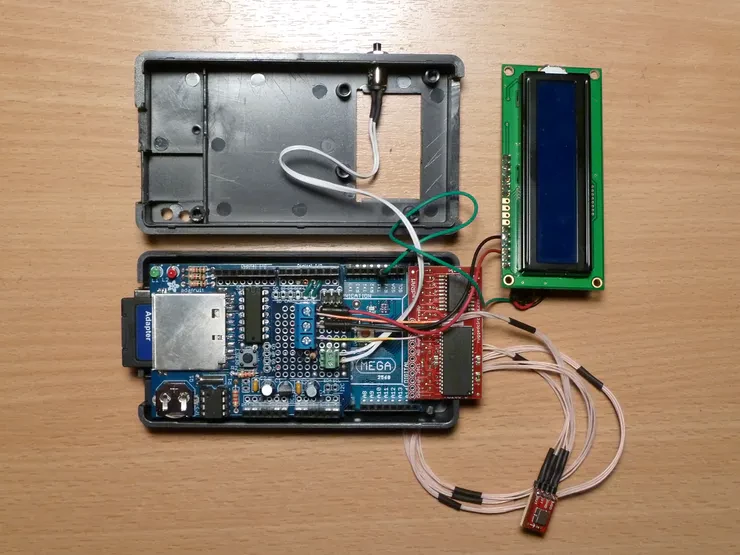
Accelerometer was attached to the slide with small piece of double-sided foam scotch tape:
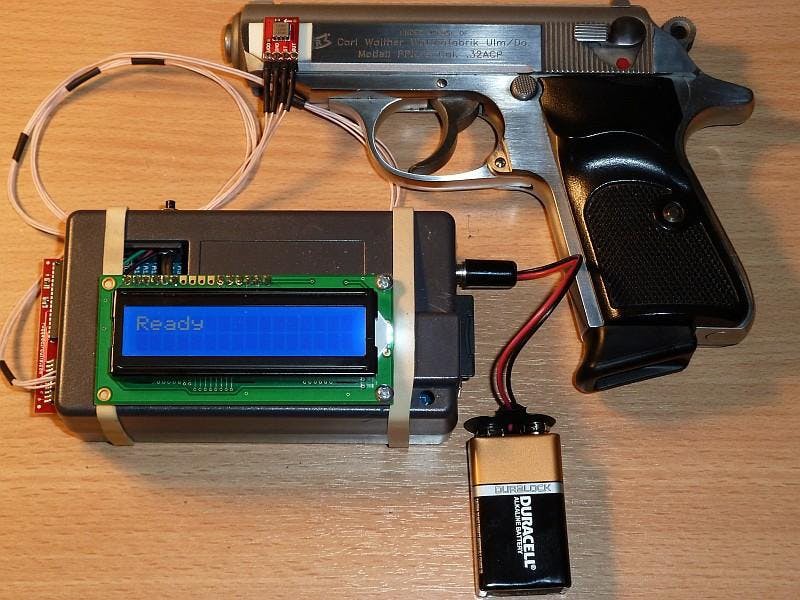
Handguns and calibers used:
S&W Model 41 caliber.22 (see below)
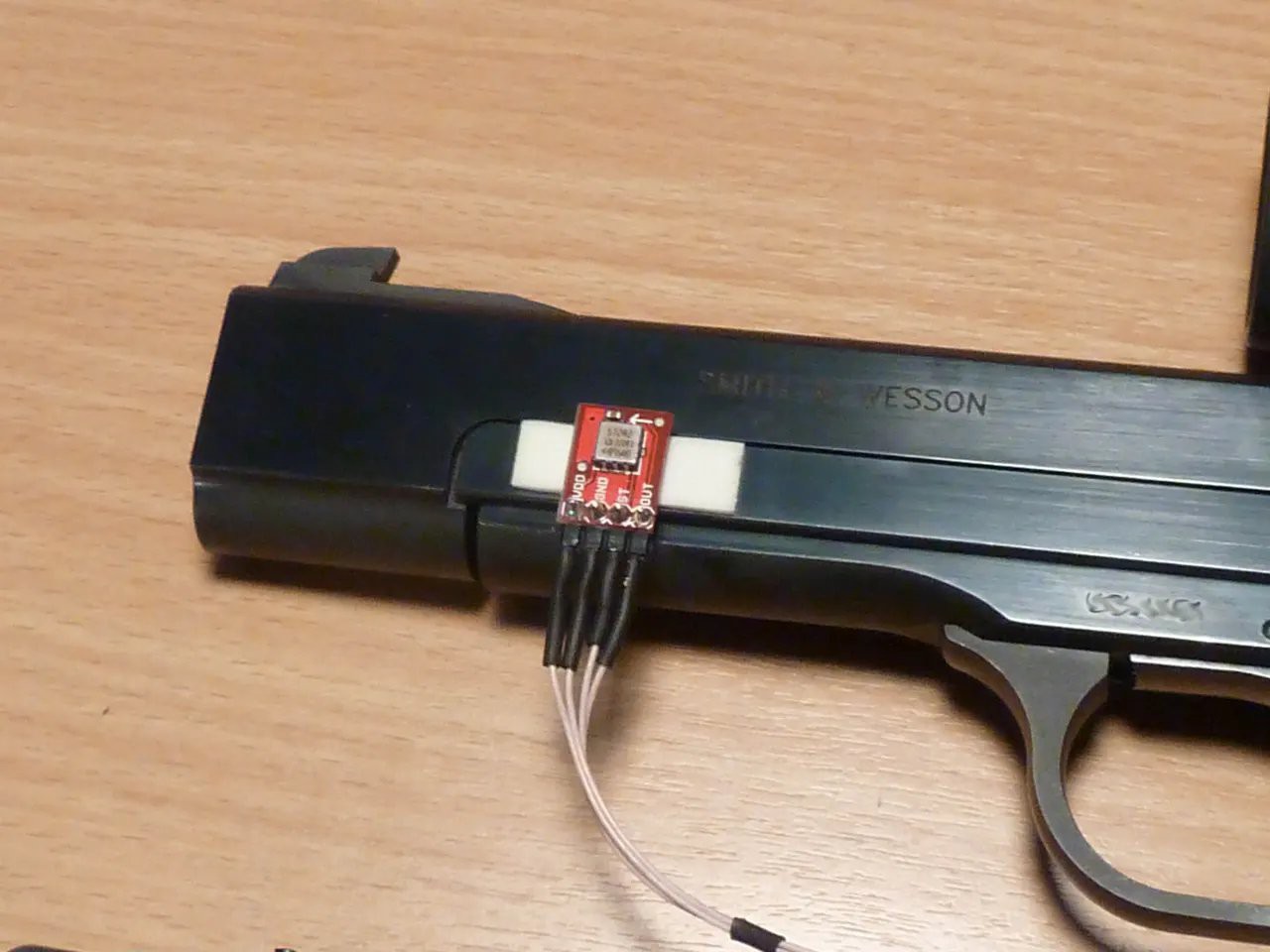
S&W M&P 9mm
S&W Walther PPK/S.32 (See above)
ADXL 193 accelerometer is a low-frequency device, so collected data shows some sort of integration of real acceleration; sensor was not calibrated and besides, the amplitude of initial acceleration is way above upper limit of sensor; because of these limitations the most useful and reliable part of collected data is just events timing and relative amplitudes of registered peaks; I did not estimate or rely upon the absolute values of acceleration;
Below are some diagrams built by data logging software I created (DELPHI 7); X axes shows current point(measurement) number; distance between 50points (1 outer tick) is 1.9 ms (38, 1 microseconds per point).
Typical data diagram for single shot of S&W Model 41 .22 pistol:
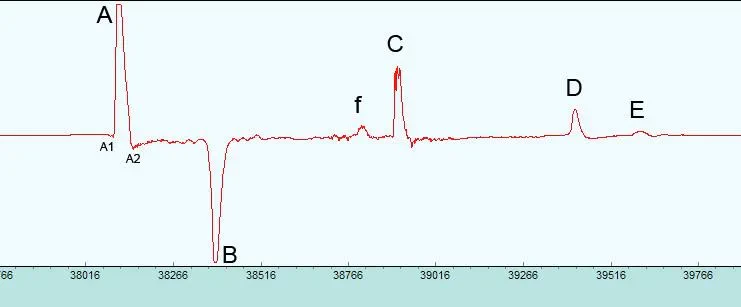
The picture above clearly shows events of single shot in blowback system:
event A - initial slide acceleration (A2-A1= 2.1ms), event B -slide hits a rear stop (11 ms after event A), event C - slide moves forward and hits the breech (20 ms after event B); after hitting the breech first time slide bounces 2 times (events D and E) and finally comes to a stop. Event F might be attributed to feeding a shell from magazine into the chamber.
The full cycle takes 57.8 ms (A1-E), average slide speed on backward motion is 3.1 m/s. I estimated the speed just by measuring slide travel distance (34 mm) and dividing by time interval (11 ms). Assuming this speed was acquired in 2.1 ms this gives an estimate of initial acceleration(averaged) of 1470 m/s2 ~ 150g
M&P 9mm with short-recoil action shows a different dynamics:

Events A & B are still initial acceleration and hitting the rear stop; at the end there are 2 peaks C and D with 5.4 ms interval; we can also see very small single bouncing (E). I could guess these two decelerations(C&D) are related to 2 events: first, when the slide, after feeding the cartridge, meets the breech face and starts pushing the barrel up and forward;second event is when barrel comes to final forward position. There are also some events (f) between forward slide motion and final stop;that might be a deceleration when the cartridge is chambered.
Walther PPK/S shows dynamics similar to Model 41, although everything occurs way faster (because of more powerful cartridge):
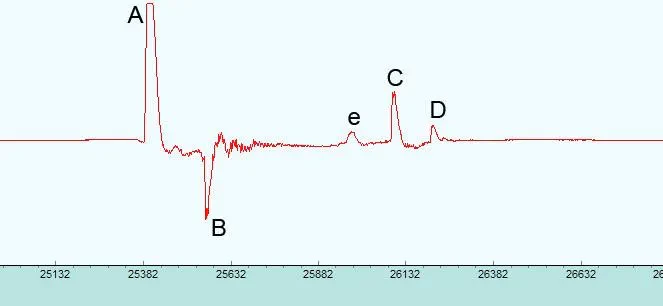
Slide moves back during6.1 ms (estimated acceleration is about 280g) which is 2.8 times faster than M&P; slide cycling in total takes only 31 ms and we see only one small bouncing. All shots I measured with PPK/S shows surprisingly low acceleration when the slide...
Read more » Konstantin D.
Konstantin D.

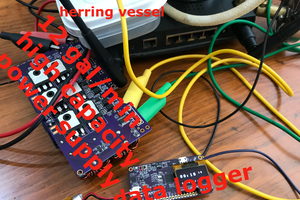
 jeff
jeff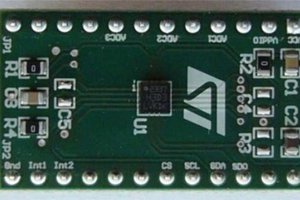
 Emach00
Emach00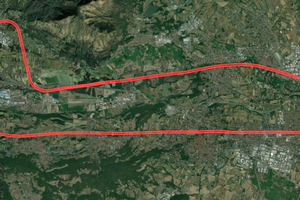
 Davide Cagnoni
Davide Cagnoni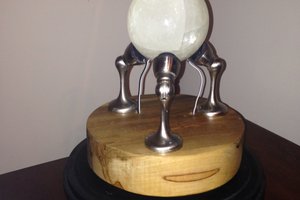
 Michael Doody
Michael Doody
Thank you for your comment. I hope this project will stay available for a while. I see that the main difference is with firearm mechanics, like, blowback vs. short recoil etc. I personally was surprised to register slide bouncing which is normally not visible.
I also suggest this simple method could be more informative, say, for fully automated weapons, and also for diagnosing reasons of malfunctions, like jamming or stovepipes..